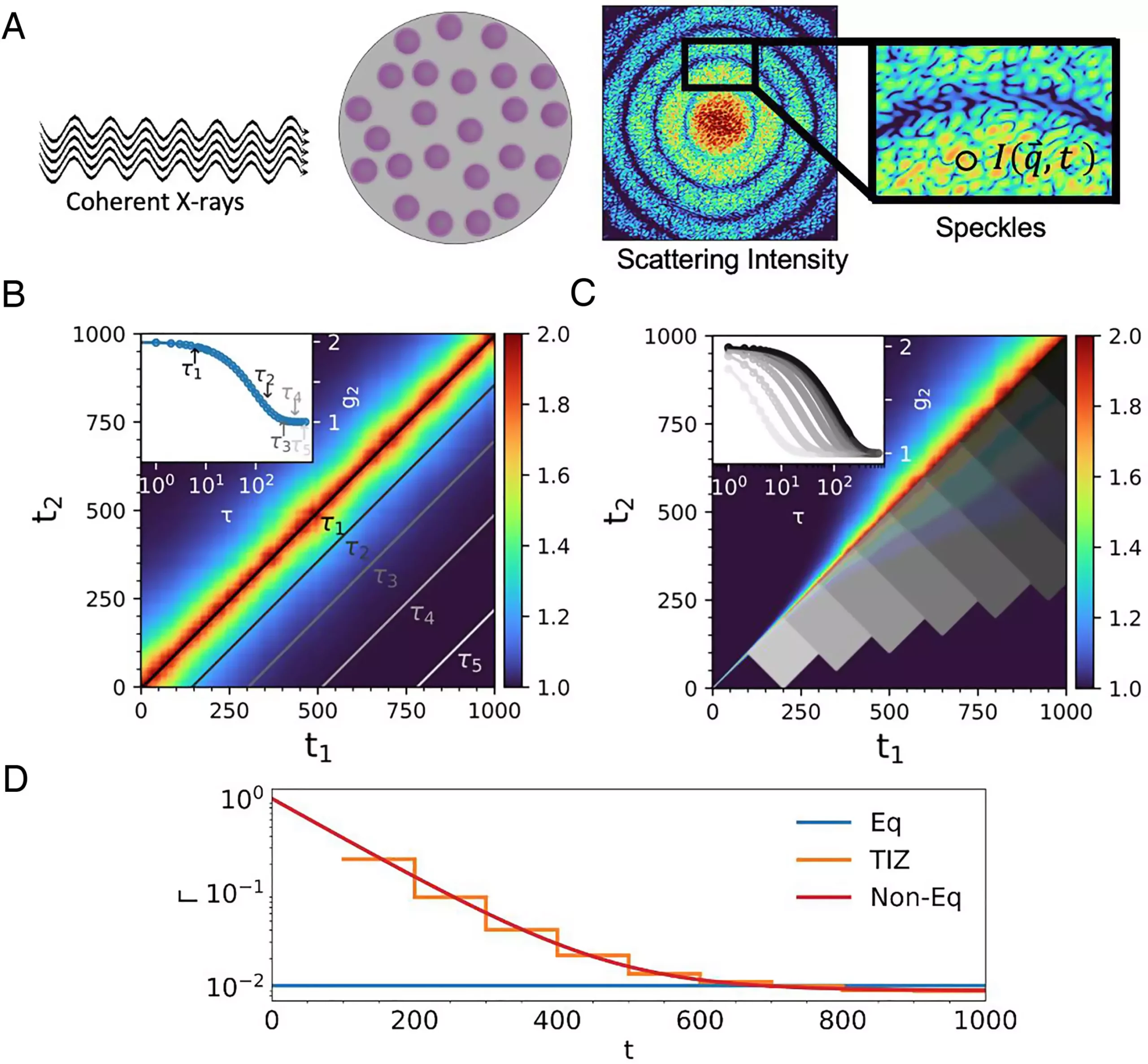Soft matter may conjure images of playful childhood memories with products like Play-Doh, but its relevance extends far beyond mere entertainment. Spanning a diverse assortment of materials—from food items like mayonnaise to industrial substances such as latex paint—soft matter plays a crucial role in numerous scientific and engineering applications. Recently, a collaborative effort between scientists from the U.S. Department of Energy’s Argonne National Laboratory and the Pritzker School of Molecular Engineering at the University of Chicago has shed light on the flow properties of these materials at an unprecedented atomic level, ushering in a new era of research and understanding.
At its core, soft matter is characterized by its flexibility and deformability, making it sensitive to various external factors, such as temperature fluctuations, mechanical forces, and chemical interactions. This responsiveness is instrumental in everyday applications. For instance, consider the practical implications of paint: once applied to a wall, it must have the ability to flow smoothly during application but stop immediately when the process ceases to prevent unsightly drips. The ability to tackle such complexities involves an in-depth comprehension of the behavior of nanoparticles within these materials, which has traditionally been a challenge due to the intricacies of their interactions at the nanoscale.
The research team’s innovative approach relies on a sophisticated technique known as X-ray Photon Correlation Spectroscopy (XPCS). Previously, XPCS was hindered by the need to average data, a limitation that obscured vital insights into the behavior of soft matter. The Argonne team has implemented a new method that facilitates a more granular analysis, enabling researchers to capture and evaluate real-time fluctuations of nanoparticles when subjected to external stimuli.
This newfound ability to characterize and quantify the interactions of nanoparticles allows for the determination of a critical component known as the transport coefficient—a measure of how effectively a material can flow. With the determination of this coefficient, scientists can now better understand the dynamic changes that occur in soft matter over time in response to external forces.
A Deep Dive into the Research
Central to this groundbreaking study was the application of XPCS at the Advanced Photon Source (APS), a facility equipped with specialized X-ray beams that can discern minute changes in material structure over time. By investigating a dense mixture of charged spherical particles immersed in a salt solution, researchers could observe how shearing forces influenced the material properties.
Shearing, akin to the action of rubbing lotion onto one’s skin, revealed three distinct bands of nanoparticle activity: fast-moving, slow-moving, and static. Observations noted that the fast-moving band dwindled after 15 seconds, only to reappear alongside the other bands approximately 40 seconds later. Such phenomena highlight the complexities of particle dynamics that were previously inaccessible to conventional analytical methods.
Implications and Future Directions
The significance of this research extends well beyond the confines of the laboratory. The ability to monitor flow properties at a nanoscale level paves the way for insights into natural occurrences, including geological events like landslides and earthquakes, as well as biological processes such as the formation of arterial plaque. Understanding how systems behave under varying stresses could provide predictive capabilities for broader phenomena, facilitating advancements in safety and health.
Looking forward, the ongoing renovation of the APS promises to enhance XPCS research, with new beamlines dedicated exclusively to this methodology. Researchers anticipate that with improved beam brightness and precision, they can undertake even more elaborate explorations of soft matter, pushing the boundaries of what is known.
The collaborative efforts at Argonne National Laboratory and the University of Chicago represent a monumental step forward in the study of soft matter. By employing innovative methodologies like XPCS, the research community is poised to unravel complex interactions at the nanoscale that have significant implications for both industrial applications and natural phenomena. The convergence of advanced tools and interdisciplinary expertise will undoubtedly herald a new age of discovery within the scientific realm, yielding applications that may redefine our understanding of materials science in the years to come. As 2024 approaches and with new experiments poised to commence at the upgraded facilities, the possibilities for future exploration appear limitless.

